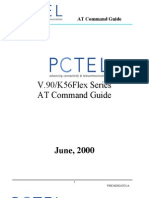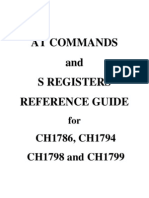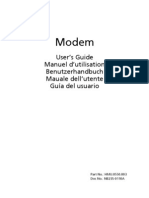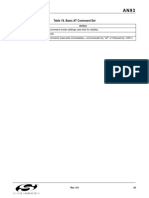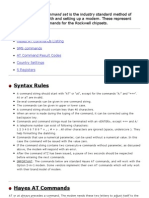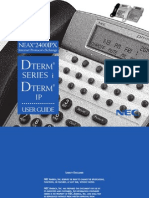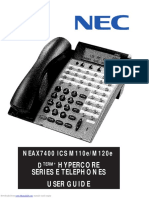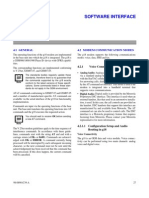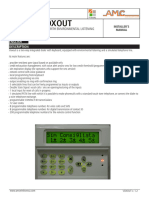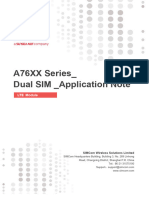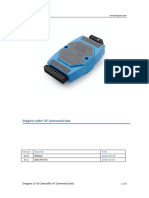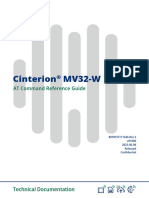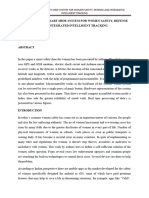Common AT modem commands
A Answer incoming call
A/ Repeat last command. (Don't preface with AT. Enter usually aborts.)
D Dial the following number and then handshake in originate mode.
Dial Modifiers (These are common but most modems will have more.)
P Pulse dial
T Touch Tone dial
W Wait for second dial tone
, Pause for time specified in register S8 (usually 2 seconds)
; Remain in command mode after dialing
! Flash switch-hook (Hang up for a half second as in transfering a call)
E Will not echo commands to the computer (also E0)
E1 Will echo commands to the computer (so one can see what one types)
H On Hook (hang up, also H0)
H1 Off Hook (phone picked up)
I Inquiry, Information, or Interrogation (This command is very model specific. I0 usually returns a number or code, while
higher numbers often provide much more useful information.)
L Speaker Loudness (L0 off or low volume) -\
L1 Low volume } Modems with volume control
L2 Medium volume (usual default) } knobs will not have these.
L3 Loud or high volume -/
M Speaker off (M0) (M3 is also common, but different on many brands)
M1 Speaker on until remote carrier detected (until the other modem is heard)
M2 Speaker is always on (data sounds are heard after CONNECT)
O Return Online (O0 see also X1 as dial tone detection may be active)
O1 Return Online after an equalizer retrain sequence
Q Quiet mode Q0 displays result codes, user sees command responses (e.g. OK)
Q1 Quiet mode, result codes are suppressed, user does not see responses
Sn? Query the contents of S-register n
Sn=r Store the value r in S-register n
V non-Verbal (Numeric result codes V0)
V1 Verbal english result codes (e.g. CONNECT, BUSY, NO CARRIER etc.)
X Hayes Smartmodem 300 compatible result codes (X0) (Many have more than 4)
X1 Usually adds connection speed to basic result codes (e.g. CONNECT 1200)
X2 Usually adds dial tone detection (preventing blind dial and sometimes ATO)
X3 Usually adds busy signal detection
X4 Usually adds both busy signal and dial tone detection
Z Reset modem to stored configuration (Z0, Z1 etc. for multiple profiles)
(Same as &F (factory default) on modems with out NVRAM (non-volatile memory)
&C0 Carrier detect (CD) signal always on
&C1 Carrier detect indicates remote carrier (usual prefered default)
&D0 Data Terminal Ready (DTR) signal ignored (See your manual on this one!)
&D1 If DTR goes from On to Off the modem goes into command mode (some modems)
&D2 Some modems hang upon DTR On to Off transition. (usual prefered default)
&F Factory defaults (Most modems have several defaults &F1, &F2, etc.)
&P (&P0) U.S./Canada pulse dialing 39% make/ 61% break ratio
&P1 U.K./Hong Kong pulse dialing 33% make/ 67% break ratio
&T Model specific self tests on some modems
&V View active (and often stored) configuration profile settings (or ATI4)
&W Store profile in NVRAM (&W0, &W1 etc. for multiple profiles)
Some settings cannot be stored. These often don't show on &V or ATI4
&Zn=x Store number x in location n for AT DS on some modems
S-registers
Register Range Default Function
S0 0-255 rings 1-2 Answer on ring number Don't answer if 0
�S1 0-255 rings 0 If S0>0 this register counts incoming rings
S2 0-127 ASCII 43 + Escape to command mode character S2>127 no ESC
S3 0-127 ASCII 13 CR Carriage return character
S4 0-127 ASCII 10 LF Line feed character
S5 0-32,127 ASCII 8 BS Backspace character
S6 2-255 seconds 2 Dial tone wait time (blind dialing, see Xn)
S7 1-255 seconds 30-60 Wait time for remote carrier
S8 0-255 seconds 2 Comma pause time used in dialing
S9 1-255 1/10 sec. 6 Carrier detect time required for recognition
S10 1-255 1/10 sec. 7-14 Time between loss of carrier and hang up
S11 50-255 millisec. 70-95 Duration and spacing of tones when tone dialing
S12 0-255 1/50 sec. 50 Guard time for pause around +++ command sequence






